Marine archaeologists diving off the coast of Caesarea have unearthed a trove of ancient artifacts, shedding light on centuries-old maritime history. The discoveries, made within the wrecks of two ships dating back to the Roman and Mamluk periods, offer valuable insights into ancient seafaring and commerce.
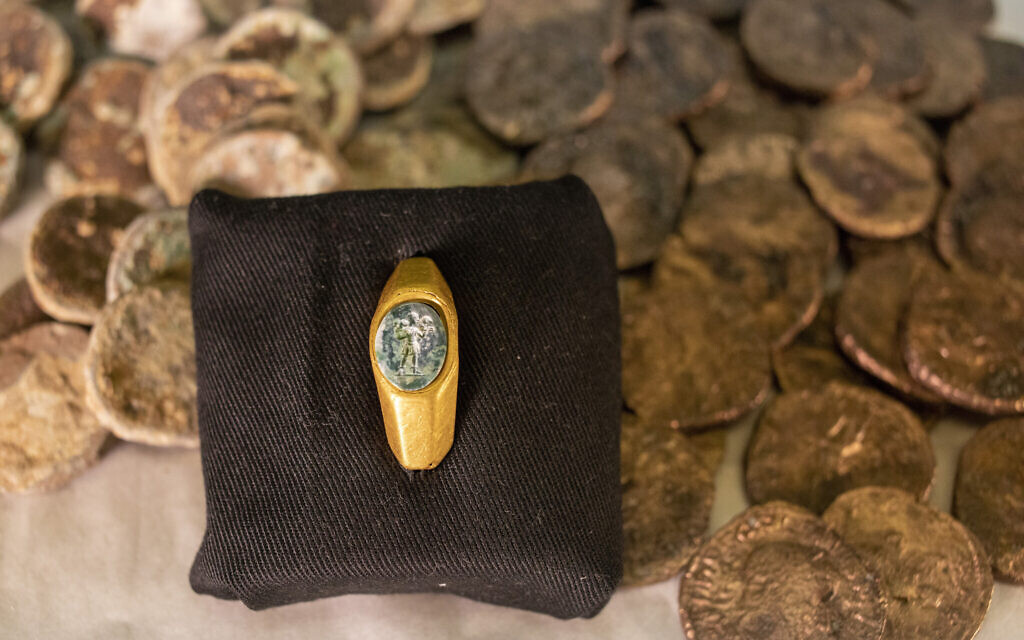
Foreground: A recently discovered gold ring with a green gemstone carved with the figure of the Good Shepherd. Background: A hoard of coins from the Mamluk period recently discovered in a shipwreck off the coast of Caesarea. (AP Photo/Ariel Schalit)
Among the remarkable finds are personal effects believed to have belonged to individuals aboard the sunken vessels. These include a thick gold ring adorned with an inlaid green gemstone, depicting a young shepherd boy with a sheep on his shoulders. The image is thought to represent the Christian symbol of the “Good Shepherd,” potentially indicating the owner’s early Christian faith.
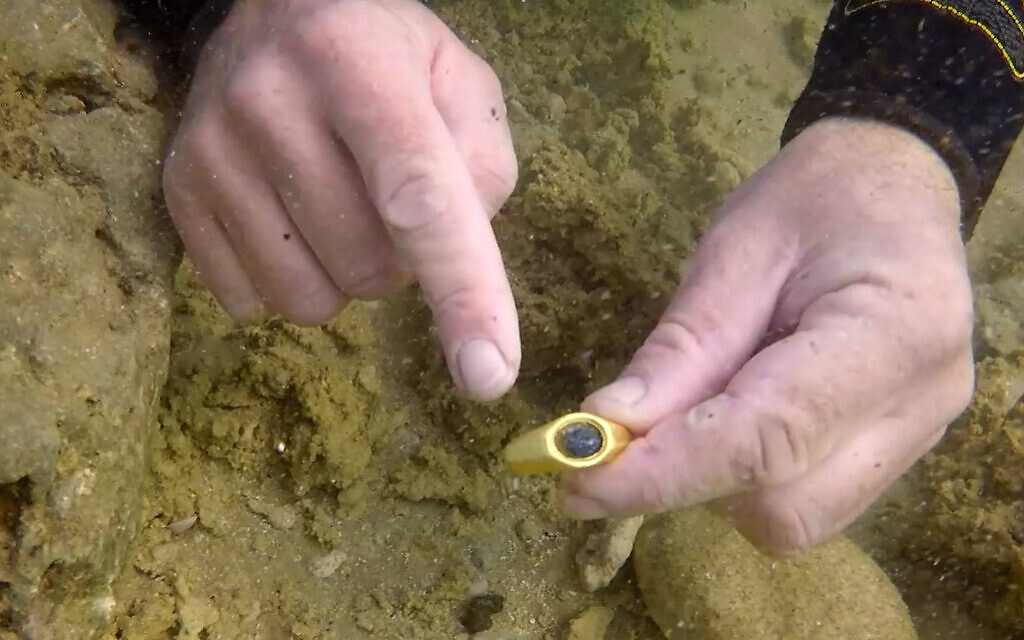
The underwater discovery of a gold ring engraved with the figure of the Good Shepherd. (Israel Antiquities Authority)
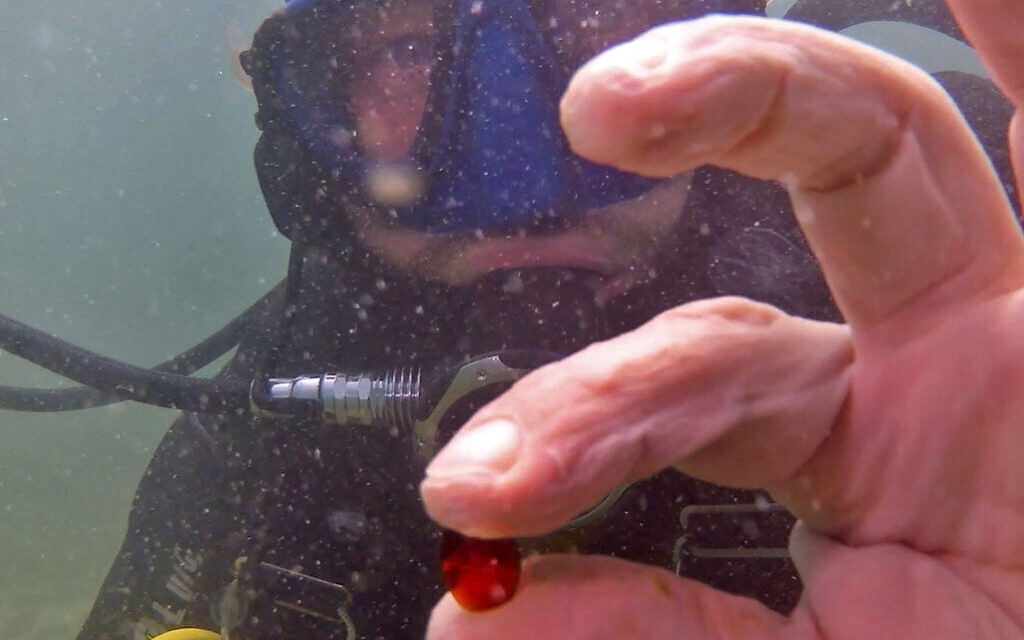
The underwater discovery of a red gemma stone engraved with a lyre. (Israel Antiquities Authority)
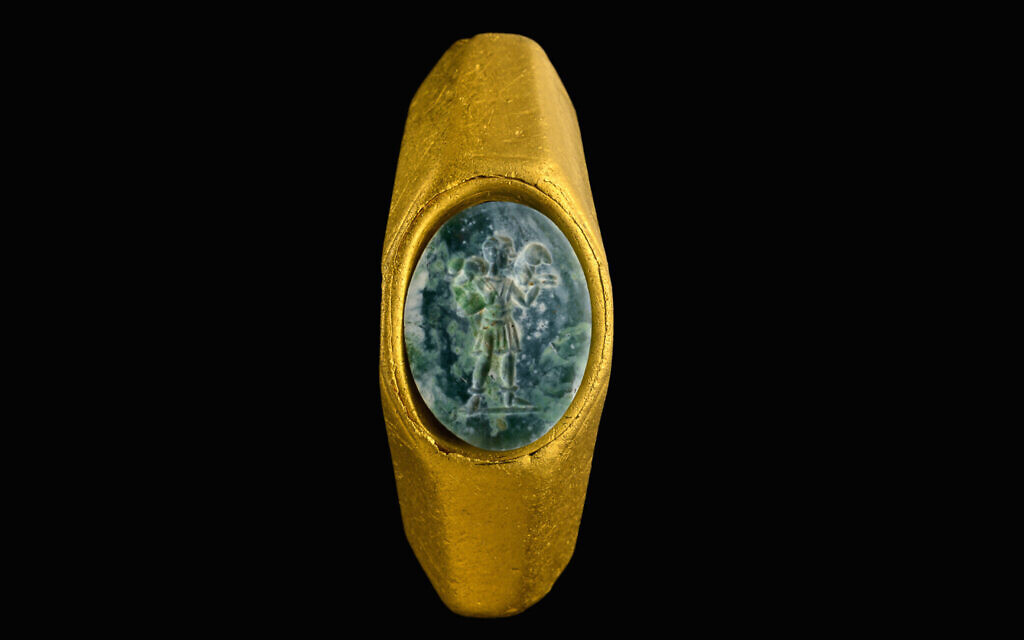
A recently discovered gold ring with a green gemstone carved with the figure of the Good Shepherd. (Dafna Gazit/Israel Antiquities Authority)
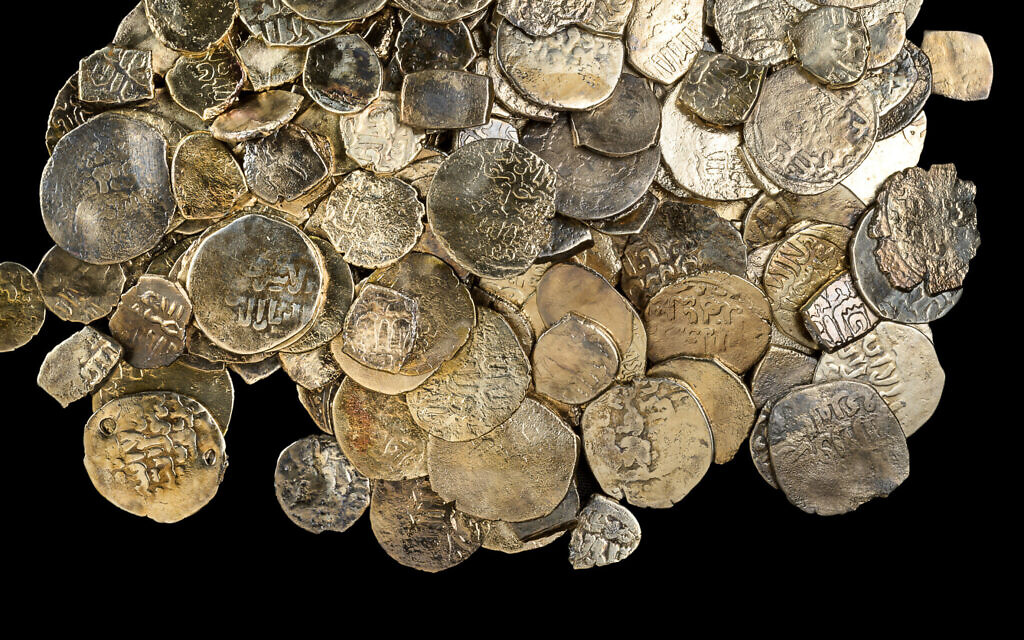
A hoard of coins from the Mamluk period recently discovered in a shipwreck off the coast of Caesarea. (Dafna Gazit/Israel Antiquities Authority)
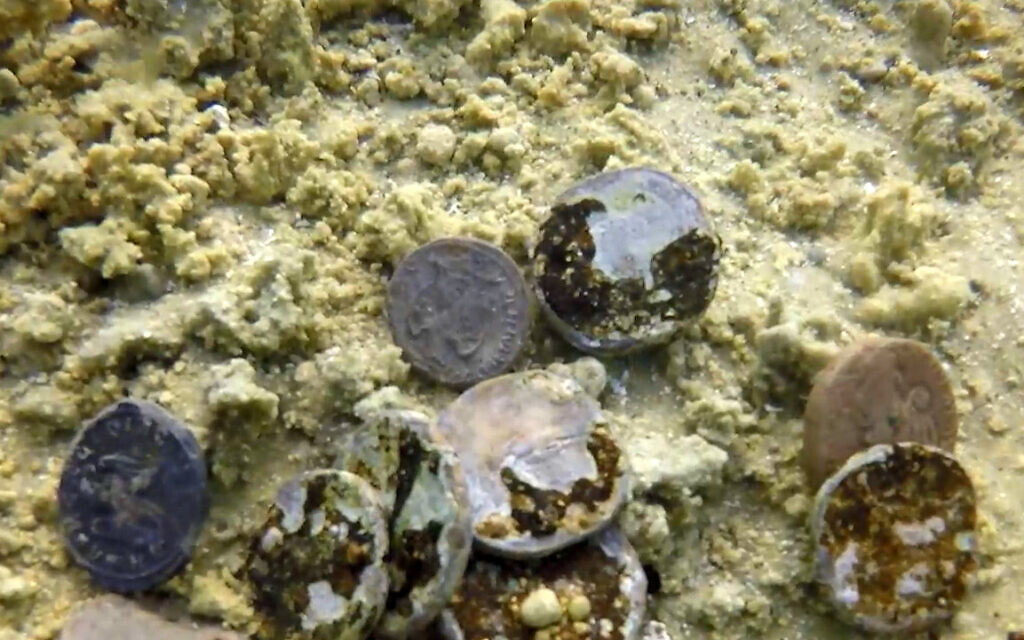
The underwater discovery of hundreds of ancient coins off the coast of Caesarea. (Israel Antiquities Authority)
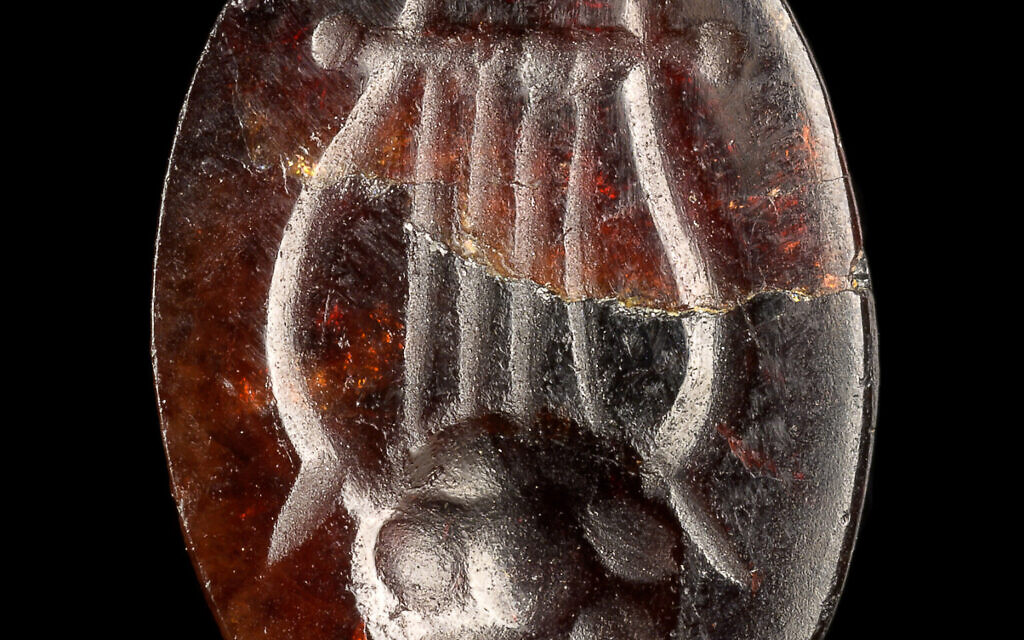
A red gemma engraved with a lyre discovered off the coast of Caesarea. (Yaniv Berman/Israel Antiquities Authority)
The uncovering of such artifacts underscores the significance of Israel’s coasts as vital cultural heritage assets. Eli Eskozido, director of the Israel Antiquities Authority, emphasizes the importance of preserving and safeguarding these vulnerable sites, urging the public to report any discoveries to authorities.
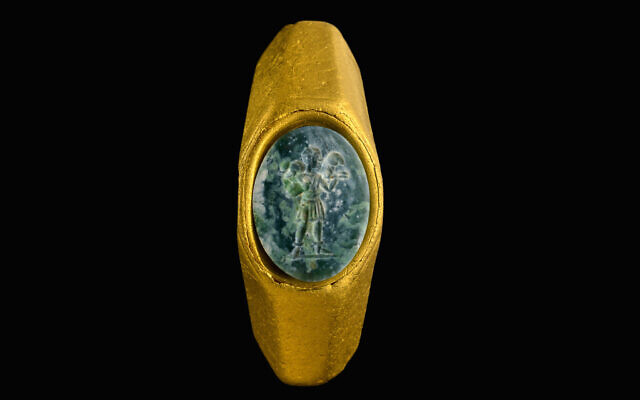
A recently discovered gold ring with a green gemstone carved with the figure of the Good Shepherd. (Dafna Gazit/Israel Antiquities Authority)
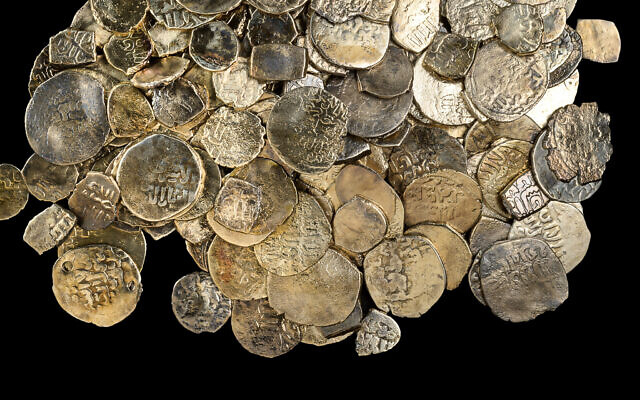
A hoard of coins from the Mamluk period recently discovered in a shipwreck off the coast of Caesarea. (Dafna Gazit/Israel Antiquities Authority)
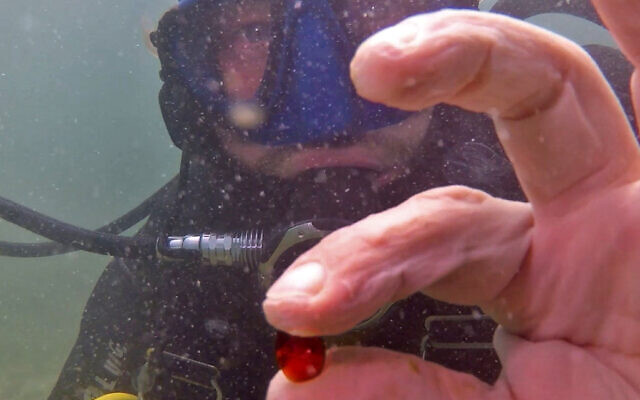
The underwater discovery of a red gemma stone engraved with a lyre. (Israel Antiquities Authority)
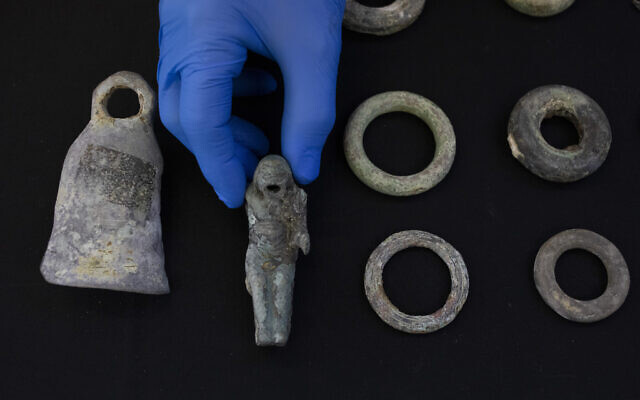
The underwater exploration also revealed a wealth of ancient currency, including hundreds of silver and bronze Roman coins from the mid-third century CE, as well as a substantial hoard of silver coins from the Mamluk period. Additionally, archaeologists found a bronze figurine in the shape of an eagle, numerous bronze bells, pottery vessels, and a large iron anchor.
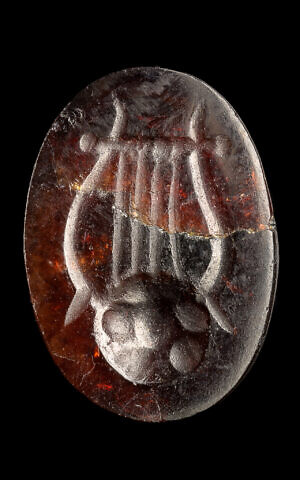
A red gemma engraved with a lyre discovered off the coast of Caesarea. (Yaniv Berman/Israel Antiquities Authority)
Notably, a red gemstone bearing a carved image of a lyre was among the uncovered treasures. Known as “David’s Harp” in Jewish tradition and “Apollo’s Lyre” in Greek mythology, this artifact adds further depth to the historical significance of the discoveries.
As marine archaeologists continue their exploration of Israel’s coastal waters, they encourage divers and beachgoers to remain vigilant and report any findings promptly. Every artifact discovered has the potential to enrich our understanding of the past and contribute to ongoing archaeological research efforts.